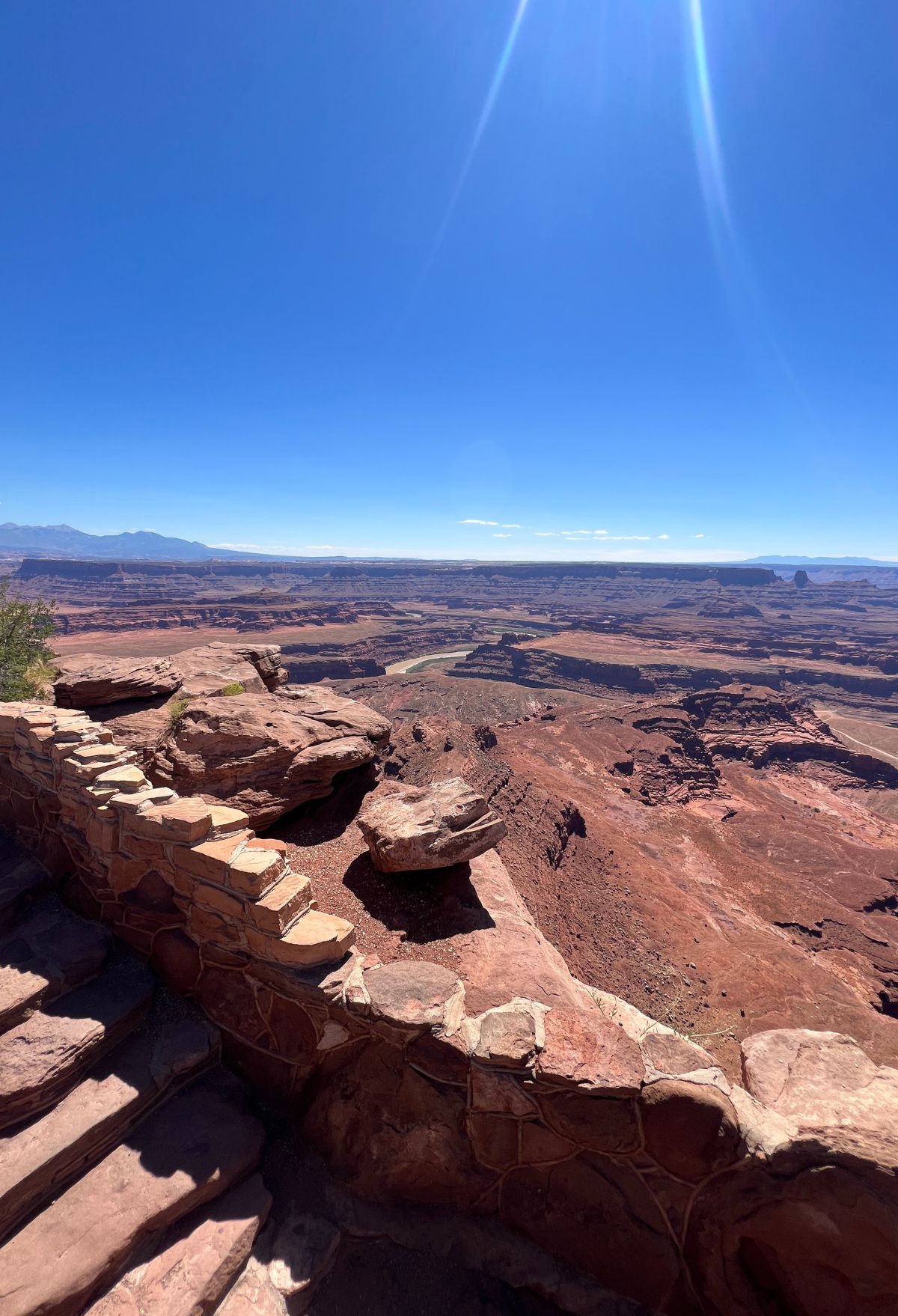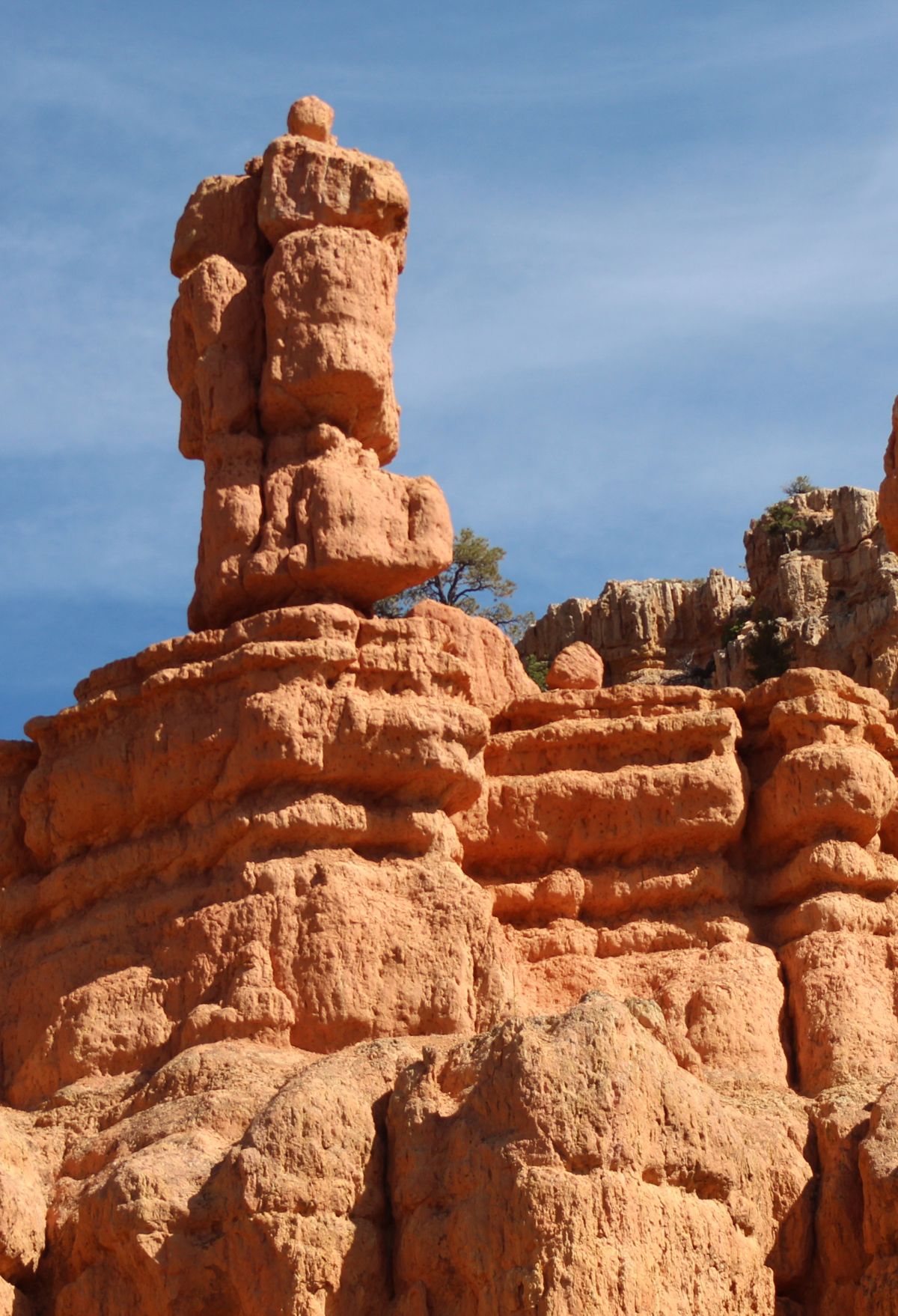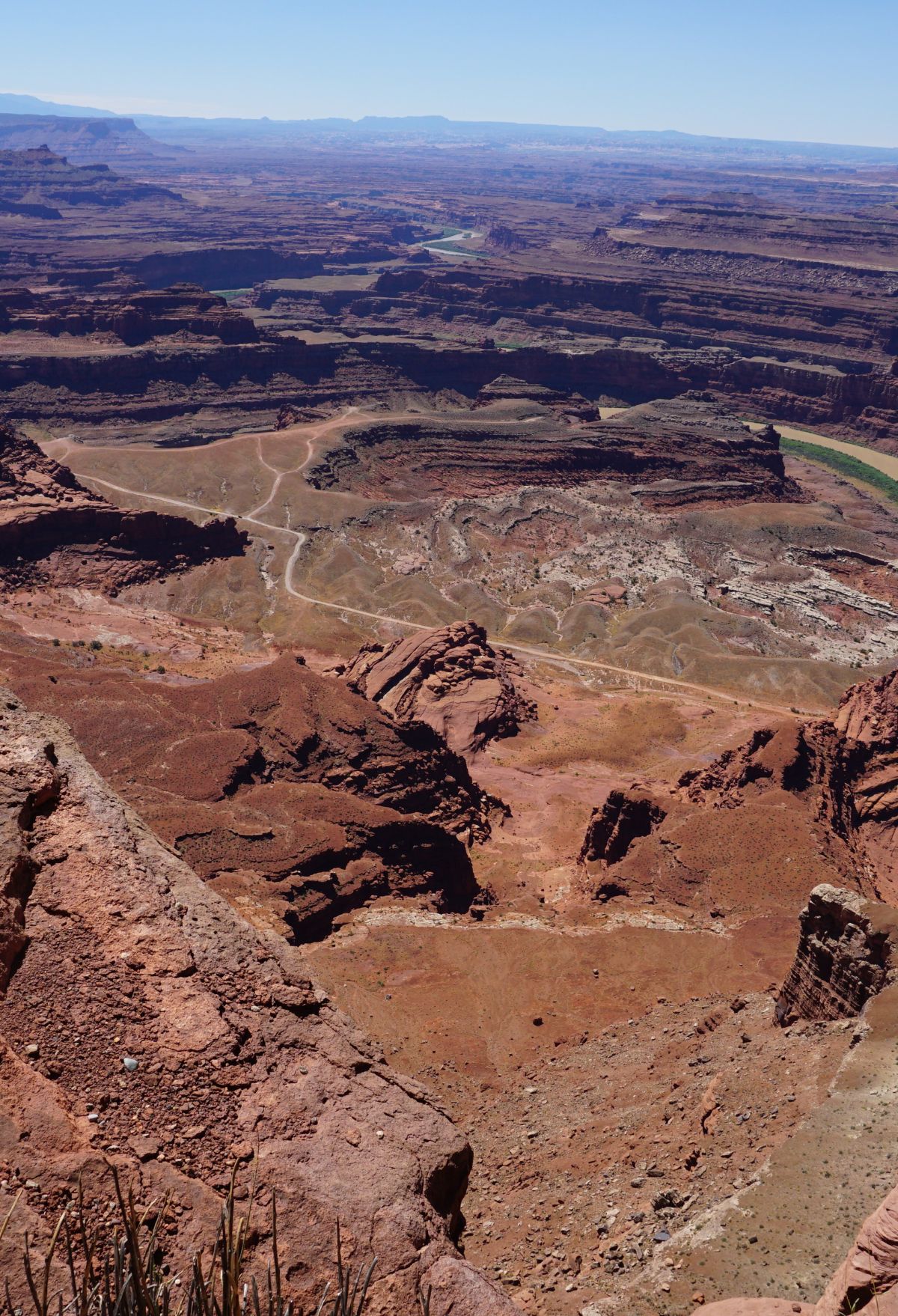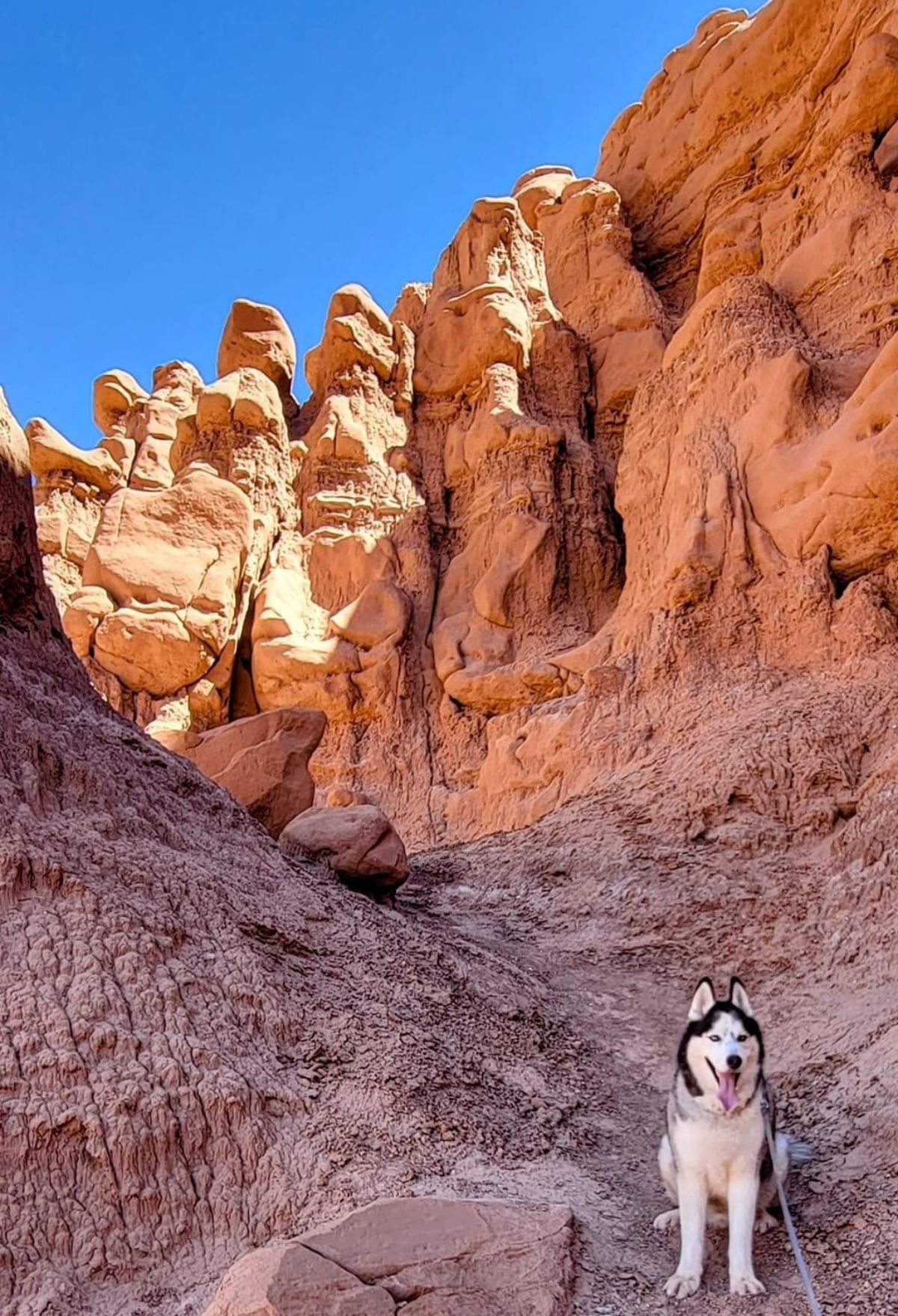Utah National Parks 5 Day Itinerary from Las Vegas
Explore the stunning natural landscapes of Utah National Parks in one unforgettable road trip! Here is a 5-day itinerary for visiting the national parks, starting with Las Vegas.
Utah National Parks Road Trip
A 5-day itinerary for visiting Utah national parks from Las Vegas can be an amazing adventure, showcasing some of the most stunning natural landscapes in the United States.
It took us a little more than 5 days to do Utah’s Mighty 5 National Parks.
However, traveling with an RV is a lot easier than having to rent a hotel room and worrying about where you will be eating.

While there are 5 National Parks in Utah that are called the Mighty 5, we are only including 4 in our Utah National Parks 5 day itinerary from Las Vegas.
If you have more time, then by all means, head over to Canyonlands National Park for day 6 where you can hike the Mesa Arch.
Pro Tip
If you want to go to Arches National Park and Canyonlands National Park, then stay in Moab, Utah where you can visit both, Dead Horse Point State Park and Hole in The Rock also.

Here’s a suggested National Parks road trip itinerary that covers the major national parks in Southern Utah.
The first stop will be Zion NP!
Day 1: Las Vegas to Zion National Park
- Morning: Depart from Las Vegas and drive to Zion National Park (approximately 2.5-3 hours).
- Afternoon: Arrive in Zion, check in to your accommodation, and have lunch.
- Visit Grafton Ghost Town near Springdale.
- Spend the afternoon exploring the Zion Canyon Scenic Drive and taking in the breathtaking views.
- Hike the easy Riverside Walk trail along the Virgin River.

2nd Day: Zion National Park
- Morning: Rise early to beat the crowds and hike the iconic Angel’s Landing trail (if you’re up for a challenging adventure) or take the less strenuous but equally beautiful Observation Point trail.
- Afternoon: Explore more of Zion’s wonders, such as Weeping Rock or the Emerald Pools.
- Evening: Relax and enjoy dinner in the town of Springdale, just outside the park.

Day 3: Bryce Canyon National Park
Bryce Canyon National Park is known for its stunning geological formations, including hoodoos, natural amphitheaters, and unique landscapes. While it’s ideal to spend more time exploring the park, if you have just one day, here’s a suggested itinerary to make the most of your visit:
A one-day itinerary for Bryce Canyon National Park can be packed with stunning viewpoints, short hikes, and opportunities to appreciate the unique geological formations and vibrant colors of the park. Here’s a suggested itinerary to make the most of your day:
Morning:
- Sunrise at Sunrise Point: Start your day early to catch the sunrise at Sunrise Point. The first light of the day casting shadows on the hoodoos is a breathtaking sight.
- Sunset Point: After sunrise, head over to Sunset Point, which is just a short walk from Sunrise Point. Take in the magnificent views of the Bryce Amphitheater, a stunning collection of hoodoos.
- Breakfast: You can have breakfast at the Bryce Canyon Lodge or pack a picnic breakfast to enjoy at one of the picnic areas in the park.

Mid-Morning:
- Navajo Loop and Queen’s Garden Trail: Start the day with a hike down into the canyon. The Navajo Loop and Queen’s Garden Trail is a popular combination that takes you through some of the most iconic formations in the park, including the Queen Victoria hoodoo.
Lunch:
- Lunch at the Bryce Canyon Lodge: Head back to the Bryce Canyon Lodge for a leisurely lunch at the restaurant. The lodge offers beautiful views of the canyon.
Afternoon:
- Bryce Point: Drive or take the shuttle to Bryce Point. This viewpoint offers a different perspective of the amphitheater and is especially stunning in the afternoon light.
- Inspiration Point: Next, visit Inspiration Point. It’s one of the most visited viewpoints in the park and offers panoramic vistas of the Bryce Amphitheater.
Late Afternoon:
- Mossy Cave Trail: As the day winds down, consider taking the short Mossy Cave Trail, which is located in the northern part of the park. The trail leads to a small waterfall and an interesting alcove with hanging gardens.
Evening:
- Sunset at Bryce Point or Inspiration Point: Depending on the time of year, either return to Bryce Point or Inspiration Point for a spectacular sunset. Check the park’s schedule for sunset times.
- Stargazing: If you’re visiting Bryce Canyon during a moonless night, stay a little longer to enjoy the park’s excellent stargazing opportunities. The park is designated as an International Dark Sky Park, making it one of the best places to view the night sky.

Please note that Bryce Canyon’s high elevation (around 8,000 to 9,000 feet) can result in cooler temperatures, even in the summer, so be sure to dress appropriately.
Additionally, check the park’s website or visitor center for any trail closures or important information before your visit.
Keep in mind that this itinerary covers some of the park’s highlights, but there are many more trails and viewpoints to explore if you have additional time.
Bryce Canyon Summary
- Morning: Check out of your Zion accommodation and drive to Bryce Canyon National Park (approximately 2 hours).
- Afternoon: Arrive in Bryce Canyon, have lunch, and then explore the Bryce Amphitheater area.
- Take a hike along the Navajo Loop and Queen’s Garden Trail for fantastic views of the hoodoos.
- Evening: Stargazing at the park’s designated stargazing points.
Day 4: Capitol Reef National Park
Capitol Reef National Park in Utah offers stunning landscapes and outdoor activities that you can enjoy in just one day. Here’s a suggested itinerary to make the most of your visit:
Morning:
- Visitor Center: Start your day at the Capitol Reef Visitor Center. Here, you can pick up maps, get information about current conditions, and ask rangers for advice on the best hikes and points of interest.
- Scenic Drive: Begin with a scenic drive along Utah State Route 24. You’ll be treated to beautiful views of the Waterpocket Fold, a unique geological feature in the park.
- Panorama Point: Make a quick stop at Panorama Point for a fantastic panoramic view of the park’s landscape. It’s a short walk from the parking area.

Late Morning:
- Hickman Bridge Trail: This moderately easy hike is one of the park’s highlights. The trailhead is located along the scenic drive, and the hike takes you to Hickman Natural Bridge, a beautiful sandstone arch. It’s about a 2-mile round trip and takes around 1-2 hours.
Lunch:
- Picnic: Enjoy a picnic lunch at one of the designated picnic areas in the park. There are some near the visitor center, or you can bring your own food.
Afternoon:
- Gifford Homestead: Visit the Gifford Homestead Historic District. You can tour the old farmhouse and buy homemade pies and other baked goods if available.
- Scenic Drive Continuation: Continue your scenic drive along Capitol Reef Scenic Drive. There are numerous pullouts and viewpoints along the way, so stop as you please to take in the views and snap some photos.
- Grand Wash Trail: If you have more time and energy, consider hiking the Grand Wash Trail, which is a relatively easy 4-mile round trip hike through a scenic canyon. It’s especially beautiful in the late afternoon.
Evening:
- Sunset at Sunset Point: Wrap up your day by heading to Sunset Point or another viewpoint to catch the sunset. The park’s red rock formations are beautifully illuminated during this time, making for incredible photo opportunities.
- Stargazing: Capitol Reef National Park is a designated International Dark Sky Park, so if you have clear skies, stay a little longer to enjoy some stargazing. Bring a telescope or simply lay on a blanket and look up at the breathtaking night sky.
Remember to check the park’s current conditions and opening hours, as they can vary by season.
Also, stay hydrated, wear appropriate clothing and footwear, and practice Leave No Trace principles to protect this beautiful natural area.
Enjoy your visit to Capitol Reef National Park!
Capitol Reef NP Summary
- Morning: Drive to Capitol Reef National Park (approximately 2.5-3 hours).
- Afternoon: Explore the Capitol Reef Scenic Drive and stop at viewpoints like Panorama Point and Goosenecks Overlook.
- Take a short hike to Hickman Bridge or explore the Fruita Historic District.
- Evening: Enjoy a serene night in the park or camp if you prefer.
Utah Mighty 5 Road Trip Day 5: Arches National Park and Return to Las Vegas
Visiting Arches National Park in one day allows you to see some of the park’s iconic features, although it won’t give you enough time to explore every corner of this vast and stunning park. Here’s a suggested itinerary for a one-day visit to Arches National Park:
Morning:
- Visitor Center: Start your day at the visitor center, which opens early. Here, you can pick up maps, ask rangers for advice, and learn about the park’s geology and history. Shortly after leaving the visitor, you can stop at Park Avenue.
- Delicate Arch Viewpoint: Head straight to the Delicate Arch Viewpoint trailhead, which is one of the most famous arches in the park. The trail is moderately strenuous, about 3-mile round trip, and takes you to a viewpoint where you can see Delicate Arch in the distance.

Midday:
- Lunch: Enjoy a packed lunch at the picnic area near the Delicate Arch trailhead, or if you prefer, drive back to the visitor center for a meal.
Afternoon:
- Devils Garden: Drive to the Devils Garden trailhead, which is the northernmost point of the park. Here, you have several options:
- Landscape Arch: A relatively easy hike to see one of the longest natural stone spans in the world.
- Double O Arch: Continue on the trail from Landscape Arch to reach Double O Arch and other interesting rock formations.
- Primitive Loop: If you’re up for a more strenuous adventure, take the Primitive Loop trail, which includes some scrambling and offers a different perspective of the park’s beauty.
Late Afternoon:
- Windows Section: Drive back towards the park’s entrance and explore the Windows Section. Here, you can see several arches relatively close to the road, including the Turret Arch, Double Arch, and North and South Windows. If you are a hiker, Angels Landing is strenuous and somewhat dangerous as people say but well worth it.
Evening:
- Sunset at Balanced Rock: End your day with a visit to Balanced Rock. This iconic formation is particularly beautiful during sunset. There’s a short trail that takes you closer to the rock for some great photo opportunities and you can also rock climb if you are into that kind of thing.
Additional Tips:
- Make sure to check the park’s website for any alerts, road closures, or updated information before your visit.
- Stay hydrated and bring plenty of water, especially if you’re visiting during the hotter months.
- Wear comfortable hiking shoes and appropriate clothing for the weather.
- Respect the Leave No Trace principles to preserve the park’s natural beauty.
- Be prepared for crowds, especially during peak tourist seasons. Arriving early in the day can help you avoid some of the congestion.
While this one-day itinerary provides a glimpse of Arches National Park, it’s worth noting that there’s so much more to explore. If possible, consider spending more time in the park to fully appreciate its wonders and hiking opportunities.
Arches NP Summary
- Morning: Drive to Arches National Park (approximately 2.5 hours).
- Explore the iconic Delicate Arch and hike to see other natural arches like Landscape Arch and Double Arch.
- Afternoon: Have lunch in Moab, the nearby town.
- Drive back to Las Vegas (approximately 6 hours). You can make a quick stop in the town of Page, Arizona, to see Horseshoe Bend or Antelope Canyon if you have extra time.
Remember to check park hours, road conditions, and any park-specific updates before your trip. This itinerary gives you a taste of Utah’s incredible national parks, but keep in mind that each park has much more to offer, so adjust your plans based on your interests and the time you have available. Additionally, book accommodations and permits well in advance, especially during peak seasons.
Pro Tip Utah National Parks
Purchase the National Parks Guide on your Apple iPhone or Android. It will guide you through the parks even when you have no cell service. As soon as you get to your starting point at the park entrance, it tells you things you didn’t know about short trails, spectacular views, and the best places to stop.
It’s like having your own personal tour guide.
Bonus State Parks to Utah National Parks Itinerary Day 6, 7, 8
Depending on how much time you have, If you get an early start on your Utah road trip and have extra time you can add some state parks along the way.
We always try to fit in as much as possible when we travel because we don’t want to miss anything.
Dead Horse Point State Park
Dead Horse Point State Park in Utah is a stunning destination with breathtaking panoramic views of the Colorado River and its deep canyons. If you have just one day to visit, you’ll want to make the most of your time. Here’s a suggested itinerary for a day at Dead Horse Point State Park:

Morning:
- Visitor Center: Start your day at the Visitor Center to get maps, and information, and learn about the park’s history and geology. This will provide context for what you’ll see during your visit.
- Sunrise: If you’re an early riser, consider catching the sunrise at Dead Horse Point Overlook or at one of the other scenic viewpoints. The sunrise here is often spectacular.
- Hike or Bike: Dead Horse Point State Park offers several hiking and biking trails. One popular option is the 1.5-mile loop trail that takes you along the rim, providing stunning vistas along the way. The West Rim Trail is a longer option for more adventurous hikers.
Midday:
- Picnic: Pack a picnic lunch and enjoy it at one of the designated picnic areas. The views here are unbeatable.
- Mountain Biking: If you’re into mountain biking, this park has some fantastic trails. The Intrepid Trail System offers various levels of difficulty, so you can choose a route that matches your skill level.
Afternoon:
- Scenic Drive: Take a leisurely drive along the park’s scenic drive. There are multiple viewpoints along the route, each offering unique perspectives of the canyons and river.
- Dead Horse Point Overlook: Don’t miss the main viewpoint at Dead Horse Point Overlook. It’s the park’s most iconic viewpoint and offers the most expansive views of the Colorado River.
Evening:
- Sunset: As the day comes to a close, head back to Dead Horse Point Overlook or another preferred viewpoint to watch the sunset. The changing colors on the rocks and river are a sight to behold.
- Stargazing: If you’re staying overnight in the park or nearby, consider doing some stargazing. The remote location and clear skies make it an excellent spot for observing the night sky.
Remember to check the park’s hours of operation and any seasonal closures or restrictions, especially if you plan to visit during the winter months.
Also, be sure to bring plenty of water, wear comfortable clothing and sturdy shoes, and follow Leave No Trace principles to help preserve this beautiful natural area.
Enjoy your day at Dead Horse Point State Park!
Goblin Valley State Park
Goblin Valley State Park is a unique and otherworldly destination located in Utah, USA.
It’s known for its fascinating rock formations that resemble goblins or other fantastical creatures.
While a single day may not be enough to explore all that this park has to offer, here’s a one-day itinerary to help you make the most of your visit.

Morning:
- Arrival and Registration: Start your day early to beat the crowds. Arrive at the park’s entrance and pay the entry fee if required.
- Visitor Center: Stop by the Visitor Center to get maps, information about the park’s geology, flora, and fauna, and to check for any updates or special events happening during your visit.
- Goblin’s Lair Trail: Begin your adventure with a moderately challenging hike to Goblin’s Lair. This trail is about a 3-mile round trip and takes you to a hidden chamber beneath the goblins. It’s a unique and intriguing natural feature.
Lunch:
- Picnic Area: Goblin Valley State Park offers several picnic areas where you can enjoy a packed lunch. Be sure to bring plenty of water and snacks, as it can get quite hot and dry during the day.
Afternoon:
- Explore the Valley: After lunch, it’s time to explore the main attraction of the park – the Goblin Valley itself. Spend your afternoon wandering through the valley among the surreal hoodoos and goblins. Take your time to snap photos, marvel at the formations, and let your imagination run wild.
- Goblin’s Playground: This area, located within the main valley, is particularly popular for climbing and exploring the formations. It’s a great place to let kids (or the kid in you) have fun climbing on the rocks.
Late Afternoon:
- Sunset Point: As the day starts to wind down, head over to Sunset Point to witness the beautiful Utah sunset. This viewpoint offers fantastic vistas of the valley, and the evening light makes the goblins even more enchanting.
Evening:
- Stargazing: Goblin Valley State Park is a designated International Dark Sky Park, making it an excellent spot for stargazing. Bring a telescope or binoculars and enjoy the incredible night sky, free from light pollution.
- Campfire: If you’re camping in the park, finish your day with a campfire (where permitted) and enjoy some s’mores while sharing stories with fellow campers.
Please note that this itinerary assumes you have a full day to explore the park.
If you’re on a tighter schedule, you may need to prioritize certain activities.
Additionally, always check the park’s website or the Visitor Center for any trail closures or safety information, especially if you’re visiting during extreme weather conditions.
Valley of Fire State Park
Valley of Fire State Park, located in Nevada, is a stunning destination known for its red sandstone formations, petroglyphs, and unique desert landscapes.
If you only have one day to explore the park, here’s a suggested itinerary to help you make the most of your visit:

Morning:
- Arrival: Start your day early to make the most of your time in the park. The park opens at sunrise, so aim to arrive shortly after to enjoy the cooler temperatures and the beautiful morning light.
- Visitor Center: Begin your visit at the Valley of Fire Visitor Center. Here, you can get maps, trail information, and learn more about the park’s geology, history, and wildlife. It’s also a great place to use the restroom and fill up your water bottles.
- Petroglyph Canyon Trail: Head to the nearby Petroglyph Canyon Trail. This short, easy trail will take you to Mouse’s Tank, a natural basin where you can see ancient petroglyphs (rock carvings) on the canyon walls. It’s a fascinating glimpse into the history of the area.
Late Morning:
- White Domes Trail: Drive to the White Domes area and embark on the White Domes Trail. This is a moderately easy loop trail that takes you through a landscape of contrasting colors and textures. You’ll encounter unique sandstone formations and may even recognize some scenes from movies that were filmed here.
Lunch:
- Picnic: There are picnic areas within the park, including the one near the White Domes area. Pack a picnic lunch and enjoy a meal surrounded by the park’s natural beauty.
Afternoon:
- Rainbow Vista: After lunch, head to Rainbow Vista. This viewpoint offers breathtaking panoramic views of the vibrant red rocks and desert landscape. It’s a great spot for photography.
- Fire Wave Trail: Hike the Fire Wave Trail, which is a relatively short hike (about 1.5 miles round trip) that leads to a remarkable striped rock formation that resembles a wave. This hike is moderately strenuous due to the sandy terrain, so wear comfortable hiking shoes.
Late Afternoon:
- Atlatl Rock: Visit Atlatl Rock, which features a large panel of petroglyphs. It’s a short walk from the parking area, and you can use a metal staircase to get a closer look at the petroglyphs.
Sunset:
- Sunset at the Beehives: Finish your day by driving to the Beehives area. The unique cone-shaped formations in this area create an otherworldly atmosphere, especially during sunset. It’s a fantastic spot to watch the changing colors of the rocks as the sun sets.
Evening:
- Return to the Visitor Center: Head back to the Visitor Center to return any materials you borrowed, and take a moment to reflect on your day in this incredible park.
Please note that the above itinerary is just a suggestion, and you can adjust it based on your interests and the amount of time you have available.
Also, be sure to check the park’s hours of operation and any trail closures or alerts before your visit, as conditions may change.
Lastly, bring plenty of water, wear sunscreen, and be respectful of the park’s natural and cultural resources.
Enjoy your day at Valley of Fire State Park!
When is the Best Time to Visit Utah National Parks
We visited in mid-September and also August and both had quite a few people. However, if you want fewer crowds, don’t go during the high season which obviously is the summer.
Popular Activities
Some of the popular activities in National Parks and State Parks include:
- Short hikes
- A Guided Tour
- Grand View Point
- Canyon Overlook
So whether you are looking to drive a scenic route, go on a mile hike, or take dirt roads with your ATV, be sure to allow plenty of time and maybe an extra day or two.
Utah is the perfect place with spectacular scenery where you will have a great time.
In Conclusion
There are so many National Monuments and more to see in Utah that you could spend a month there and still not see everything.
Here are a few more things to add to your Utah National Park road trip bucket list.
- Grand Canyon
- Monument Valley
- Kolob Canyons
- Lake Powell
Follow us on Pinterest and PIN IT for later!







